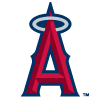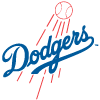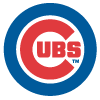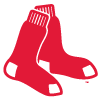Last week's top riser Shane Bieber needs Tommy John surgery and will be out until the middle of next year. So will Eury Perez. So will Spencer Strider, most likely, though we're still waiting official confirmation there. That trio joins an elite group featuring pitchers like Sandy Alcantara, Gerrit Cole, Jacob deGrom, Clayton Kershaw, Shane McClanahan and Brandon Woodruff on the shelf to start the year. Blake Snell and Corbin Burnes are the only active Cy Young winners who are currently available to pitch.
It's a horrible way to start the year for the game of baseball, and it's a pretty awful experience as both a fan and a fantasy player, with so many people's favorite teams or fantasy squads already down one or more key starters. The big topic of the past week has been not the performance of players on the field, but where the blame should be placed for the elbow-injury epidemic. A significant part of that discussion has centered on the role of the pitch clock in the whole affair.
Obviously, the pitch clock isn't the primary culprit behind the recent wave of pitching injuries. Injuries have been elevated for years now, and the pitch clock has only been part of Major League Baseball since last year. But the other causes of injury, like ever-increasing velocity and a drive towards constant max-effort pitching, were well known prior to the clock being implemented last year. How could the league justify adding
Last week's top riser Shane Bieber needs Tommy John surgery and will be out until the middle of next year. So will Eury Perez. So will Spencer Strider, most likely, though we're still waiting official confirmation there. That trio joins an elite group featuring pitchers like Sandy Alcantara, Gerrit Cole, Jacob deGrom, Clayton Kershaw, Shane McClanahan and Brandon Woodruff on the shelf to start the year. Blake Snell and Corbin Burnes are the only active Cy Young winners who are currently available to pitch.
It's a horrible way to start the year for the game of baseball, and it's a pretty awful experience as both a fan and a fantasy player, with so many people's favorite teams or fantasy squads already down one or more key starters. The big topic of the past week has been not the performance of players on the field, but where the blame should be placed for the elbow-injury epidemic. A significant part of that discussion has centered on the role of the pitch clock in the whole affair.
Obviously, the pitch clock isn't the primary culprit behind the recent wave of pitching injuries. Injuries have been elevated for years now, and the pitch clock has only been part of Major League Baseball since last year. But the other causes of injury, like ever-increasing velocity and a drive towards constant max-effort pitching, were well known prior to the clock being implemented last year. How could the league justify adding even a tiny bit more injury risk when the situation was already out of hand?
There's a reason the MLBPA objected to the clock in the first place, and it's not because the players wanted to work longer hours. The league's decision to overrule their objection and institute the clock anyway was an irresponsible one given the circumstances, and the fact that MLB ignored safety concerns from the people who are actually at risk of injury shouldn't be forgotten.
It certainly hasn't been forgotten by the players, with stars such as Gerrit Cole ripping the league for immediately dismissing any possibility that the clock was part of the problem. It doesn't bode well for the next set of labor negotiations. The only peaceful way out of this that I can see is for the league to retract its combative and inaccurate statement, acknowledge that it's an open question whether the clock is safe or not, and agree to investigate the issue in conjunction with the player's union.
The clock should remain for the rest of this season, because it's unreasonable to change the rules mid-season, but whether it returns next year should be contingent on sufficient proof that it doesn't put the stars we all root for at risk. Even if you're someone who thinks that pitch-clock baseball is far more watchable than pre-clock baseball — I think both versions are great, myself — I'd hope you'd be willing to have the games be a bit longer again if it meant your favorite players were more likely to stay on the field.
And to those who have already left a comment saying something to the effect of, "it's not the clock, it's the velocity, dummy," you're missing the point. Everyone agrees that the velocity and the fact that pitchers throw at maximum effort more often than ever (starting at the youth level, even) is the primary problem. It's whether or not the clock is also a problem that's at stake right now.
Making the clock problem more urgent is that the velocity/max effort problem isn't going away any time soon. Asking pitchers to fix the injury problem on their own by not throwing as hard as they can is akin to asking NFL players to fix the league's concussion problem by taking a knee whenever a defender is within five yards. This is professional sports at the highest level we're talking about. Anyone who doesn't compete at maximum effort as often as possible loses their spot to someone else who's willing to do so, as 12-year veteran Alex Wood noted. If your stuff is as good as peak Justin Verlander's, maybe you can dial it down most of the time and still have good enough stuff to get hitters out. But for everyone else, only their best will do. For their sake, let's get rid of anything that makes it even harder for them to stay on the field.
Anyway, back to the fun stuff. We'll go with a risers-heavy group this week for some positivity to offset that downer of an intro. At this stage of the season, it's still too early to panic about most slash lines, ERAs or WHIPs. Those things are heavily influenced by things like BABIP luck, which makes them imperfect estimates of a player's ability at the end of the season and pretty useless in most cases right now. Stats like strikeout rates and walk rates become somewhat interesting pretty quickly and will be mentioned throughout this article, but even for those numbers, it's easy to have a hot or cold streak that lasts two weeks. At this stage of the season, it's more about noticing these starts and paying attention to whether or not they're sustained for the next few weeks, so it's best to avoid overreactions.
Risers
 Mike Trout, OF, Angels: You might be surprised to find Trout on a Risers list, as the fact that he's performing while healthy isn't really a surprise. Yes, he's tied for the league lead in homers (six) and sits fourth among qualified hitters in wRC+ (222). But we'd come to expect elite performance from Trout when healthy, as his 163 wRC+ over the previous three seasons (in which he'd been limited to an average of 79 games) was third-best in the league, minimum 1,000 plate appearances. But it wasn't only durability concerns which accounted for his precipitous drop in ADP this past winter. Drafters saw a player who was no longer a five-category player and whose rising strikeout rate and lack of steals meant he wasn't a lock for first-round value even during the time he remained on the field:
Mike Trout, OF, Angels: You might be surprised to find Trout on a Risers list, as the fact that he's performing while healthy isn't really a surprise. Yes, he's tied for the league lead in homers (six) and sits fourth among qualified hitters in wRC+ (222). But we'd come to expect elite performance from Trout when healthy, as his 163 wRC+ over the previous three seasons (in which he'd been limited to an average of 79 games) was third-best in the league, minimum 1,000 plate appearances. But it wasn't only durability concerns which accounted for his precipitous drop in ADP this past winter. Drafters saw a player who was no longer a five-category player and whose rising strikeout rate and lack of steals meant he wasn't a lock for first-round value even during the time he remained on the field:
Year | NFBC ADP | PA | wRC+ | K% | SB/600 PA |
|---|---|---|---|---|---|
2017 | 1.2 | 507 | 180 | 17.8% | 26.0 |
2018 | 1.1 | 608 | 188 | 20.4% | 23.7 |
2019 | 1.2 | 600 | 177 | 20.0% | 11.0 |
2020 | 3.2 | 241 | 160 | 23.2% | 2.5 |
2021 | 6.8 | 146 | 189 | 28.1% | 8.2 |
2022 | 13.9 | 499 | 176 | 27.9% | 1.2 |
2023 | 20.0 | 362 | 134 | 28.7% | 3.3 |
2024 | 61.2 | 50 | 236 | 16.0% | 24.0 |
Trout slipped from first overall in 2020 as his steals started to wane, but he stuck around in or near the first round for several seasons before the draft pool collectively moved him down nearly three rounds this past winter. Three consecutive years in which he struck out an elevated clip and declined to run meant that even without injury concerns, it wasn't clear that he was an obvious first rounder at this point in his career. If he was merely a 3.5-category player (homers, runs, RBI and a decent batting average) with extreme injury risk, it was easy to be completely out on him. But through 10 games, not only is he showing vintage Trout power, he's also running again and making more contact. Look out, world — at least for as long as Trout remains on the field.
 Yoshinobu Yamamoto, SP, Dodgers: Yamamoto pitched very poorly in his MLB debut, allowing five runs in one inning of work, but he was hardly the only pitcher to struggle during the Seoul Series, which was awkwardly placed in the middle of spring training when pitchers were far from built up. A full 10 pitchers left that two-game series with an ERA north of 8.00. If Yamamoto had still been pitching in the Cactus League at that time and another team were playing in Korea instead of the Dodgers, his start to the season would be generating a lot more excitement. In his two stateside starts, he's struck out 13, walked two and scattered five hits across 10 scoreless innings. Even with his disastrous debut factored in, his 31.9 percent strikeout rate, 6.4 percent walk rate and 50.0 percent groundball rate are all excellent marks, and his 2.74 SIERA indicates just how well he's pitched overall. If you drafted him, you might have found yourself stuck on the bottom of the standings for over a week waiting for the season to properly begin, but there's still plenty of time for him to pay off his draft price and then some.
Yoshinobu Yamamoto, SP, Dodgers: Yamamoto pitched very poorly in his MLB debut, allowing five runs in one inning of work, but he was hardly the only pitcher to struggle during the Seoul Series, which was awkwardly placed in the middle of spring training when pitchers were far from built up. A full 10 pitchers left that two-game series with an ERA north of 8.00. If Yamamoto had still been pitching in the Cactus League at that time and another team were playing in Korea instead of the Dodgers, his start to the season would be generating a lot more excitement. In his two stateside starts, he's struck out 13, walked two and scattered five hits across 10 scoreless innings. Even with his disastrous debut factored in, his 31.9 percent strikeout rate, 6.4 percent walk rate and 50.0 percent groundball rate are all excellent marks, and his 2.74 SIERA indicates just how well he's pitched overall. If you drafted him, you might have found yourself stuck on the bottom of the standings for over a week waiting for the season to properly begin, but there's still plenty of time for him to pay off his draft price and then some.
 Shota Imanaga, SP, Cubs: Imanaga joins Yamamoto in beginning his stateside career with two scoreless starts, and in Imanaga's case, that means his MLB ERA still stands at a spotless 0.00. He also has a perfect 0.0 percent walk rate, and his 34.3 percent strikeout rate and 0.40 WHIP couldn't be much better. He fired six shutout innings in his MLB debut, but given that those came against the Rockies (at Wrigley, not Coors), it was fair to want to see another start before getting too excited. The schedule handed him the Dodgers in his second outing, and he didn't disappoint. A lengthy mid-game rain delay cut his start short after four frames, but he held the juggernaut offense to just two hits and no runs. The lone question for Imanaga remains his 8.7 percent groundball rate. (League average in that category last year was 42.5 percent, with no qualified starter under 25 percent.) Imanaga's signature pitch is a rising fastball, which he's thrown two thirds of the time thus far while pounding the top of the zone, per this visual from Statcast:
Shota Imanaga, SP, Cubs: Imanaga joins Yamamoto in beginning his stateside career with two scoreless starts, and in Imanaga's case, that means his MLB ERA still stands at a spotless 0.00. He also has a perfect 0.0 percent walk rate, and his 34.3 percent strikeout rate and 0.40 WHIP couldn't be much better. He fired six shutout innings in his MLB debut, but given that those came against the Rockies (at Wrigley, not Coors), it was fair to want to see another start before getting too excited. The schedule handed him the Dodgers in his second outing, and he didn't disappoint. A lengthy mid-game rain delay cut his start short after four frames, but he held the juggernaut offense to just two hits and no runs. The lone question for Imanaga remains his 8.7 percent groundball rate. (League average in that category last year was 42.5 percent, with no qualified starter under 25 percent.) Imanaga's signature pitch is a rising fastball, which he's thrown two thirds of the time thus far while pounding the top of the zone, per this visual from Statcast:
So far, Imanaga's command of the pitch, it's elite vertical movement and some brutal weather have combined to keep his flyball as flyouts rather than home runs. As I sat at Wrigley watching his debut, the wind felt like it was blowing straight down as much as in, and the barrage of flyballs he allowed had to fight through a drizzle for a good portion of his start. I can imagine he'll have a few frustrating outings where two or three of those flyballs clear the fence instead of dying on the track. Still, you can't ask for a much better start from The Throwing Philosopher.
 Christopher Morel, 3B/OF, Cubs: Morel is an easy player to dream on. His statcast profile is a mix of some of the reddest red and the bluest blue, and you can't help but wonder the sort of player he could become if he paired his 95th percentile barrel rate from last season with a whiff rate better than his second percentile mark. His performance over the first two weeks offers a window into what he could become. He's maintained an elite barrel rate (15.0 percent) and hard hit rate (50.0 percent), but he's cut his whiff rate from 37.0 percent to 20.0 percent, leading to a drop in strikeout rate from 31.0 percent to 14.0 percent. The result has been an excellent .298/.340/.553 slash line with three homers, 11 runs and 10 RBI, and his .349 xBA and .609 xSLG indicate his numbers could be even higher. He'll undoubtedly slip towards his career norms as the season progresses, but given how hard he hits the ball, all he really needs to do is trim his strikeout rate from the low thirties to the high twenties and he has a chance to reach a new level. Just as encouraging is the fact that Morel's defensive deficiencies aren't costing him playing time other than the occasional late substitution. He's hit cleanup in all 12 of the Cubs' games so far, with eight starts at third base and four at designated hitter.
Christopher Morel, 3B/OF, Cubs: Morel is an easy player to dream on. His statcast profile is a mix of some of the reddest red and the bluest blue, and you can't help but wonder the sort of player he could become if he paired his 95th percentile barrel rate from last season with a whiff rate better than his second percentile mark. His performance over the first two weeks offers a window into what he could become. He's maintained an elite barrel rate (15.0 percent) and hard hit rate (50.0 percent), but he's cut his whiff rate from 37.0 percent to 20.0 percent, leading to a drop in strikeout rate from 31.0 percent to 14.0 percent. The result has been an excellent .298/.340/.553 slash line with three homers, 11 runs and 10 RBI, and his .349 xBA and .609 xSLG indicate his numbers could be even higher. He'll undoubtedly slip towards his career norms as the season progresses, but given how hard he hits the ball, all he really needs to do is trim his strikeout rate from the low thirties to the high twenties and he has a chance to reach a new level. Just as encouraging is the fact that Morel's defensive deficiencies aren't costing him playing time other than the occasional late substitution. He's hit cleanup in all 12 of the Cubs' games so far, with eight starts at third base and four at designated hitter.
 Tyler O'Neill, OF, Red Sox: Outfielder leaves St. Louis, starts playing much better. Ever heard that one before? O'Neill seemingly broke out back in 2021, playing 138 games and hitting .286/.352/.560 with 34 homers and 15 steals, but over the two injury-filled seasons which followed, he slashed just 229/.310/.397. The Red Sox acquired him cheaply back in December, and they have to be thrilled with the return thus far. The Canadian outfielder can't erase questions about his durability in just two weeks, but he's doing his best to answer any performance-related questions, specifically those to do with his ability to make contact. His strikeout rate in his most successful season came in at 31.3 percent, and he's at 29.8 percent for his career, but he's struck out just 22.0 percent of the time thus far. That's perhaps the part of his stat line with the most long-term significance, as O'Neill could really unlock a new level if he could pair his power with even league-average contact, but it's his six homers which are earning him the early attention. That has him tied with Mike Trout for the league lead, while his 1.229 OPS trails only Mookie Betts. If his body holds up, expect O'Neill to keep sending baseballs into and over the Green Monster all season.
Tyler O'Neill, OF, Red Sox: Outfielder leaves St. Louis, starts playing much better. Ever heard that one before? O'Neill seemingly broke out back in 2021, playing 138 games and hitting .286/.352/.560 with 34 homers and 15 steals, but over the two injury-filled seasons which followed, he slashed just 229/.310/.397. The Red Sox acquired him cheaply back in December, and they have to be thrilled with the return thus far. The Canadian outfielder can't erase questions about his durability in just two weeks, but he's doing his best to answer any performance-related questions, specifically those to do with his ability to make contact. His strikeout rate in his most successful season came in at 31.3 percent, and he's at 29.8 percent for his career, but he's struck out just 22.0 percent of the time thus far. That's perhaps the part of his stat line with the most long-term significance, as O'Neill could really unlock a new level if he could pair his power with even league-average contact, but it's his six homers which are earning him the early attention. That has him tied with Mike Trout for the league lead, while his 1.229 OPS trails only Mookie Betts. If his body holds up, expect O'Neill to keep sending baseballs into and over the Green Monster all season.
 Spencer Turnbull, SP, Tigers: Turnbull did not have a good time last season. He had a 7.26 ERA and 1.68 WHIP in seven starts in his return from Tommy John surgery, but that wasn't even the worst part. The Tigers demoted him in early May, but it was revealed that he was in fact dealing with a neck injury and had to be placed on the injured list, rather than sent down. Had the demotion been allowed to stand, it would have pushed back his free agency by another year. In the end, the Tigers wound up non-tendering him in November, rendering the battle for service time irrelevant. He signed a one-year, $2 million deal with the Phillies to be the team's sixth starter but wound up making the Opening Day rotation due to Taijuan Walker's shoulder injury. Walker began a rehab assignment this week, but Turnbull has pitched well enough in his first two starts that he'll leave the Phillies with some tough decisions to make when the rotation is back to full strength. Turnbull shut out the Reds across five innings and shut out the Cardinals across six frames, giving him a 0.00 ERA, 0.55 WHIP and 13:1 K:BB to start the year. The fact that these performances came after Turnbull added a sweeper indicates that we might want to throw out our previous conceptions of him as a boring fifth starter type and wonder whether he could be a legitimate mid-rotation starter on a good team.
Spencer Turnbull, SP, Tigers: Turnbull did not have a good time last season. He had a 7.26 ERA and 1.68 WHIP in seven starts in his return from Tommy John surgery, but that wasn't even the worst part. The Tigers demoted him in early May, but it was revealed that he was in fact dealing with a neck injury and had to be placed on the injured list, rather than sent down. Had the demotion been allowed to stand, it would have pushed back his free agency by another year. In the end, the Tigers wound up non-tendering him in November, rendering the battle for service time irrelevant. He signed a one-year, $2 million deal with the Phillies to be the team's sixth starter but wound up making the Opening Day rotation due to Taijuan Walker's shoulder injury. Walker began a rehab assignment this week, but Turnbull has pitched well enough in his first two starts that he'll leave the Phillies with some tough decisions to make when the rotation is back to full strength. Turnbull shut out the Reds across five innings and shut out the Cardinals across six frames, giving him a 0.00 ERA, 0.55 WHIP and 13:1 K:BB to start the year. The fact that these performances came after Turnbull added a sweeper indicates that we might want to throw out our previous conceptions of him as a boring fifth starter type and wonder whether he could be a legitimate mid-rotation starter on a good team.
 Jordan Hicks, SP, Giants: If you were skeptical when the Giants signed Hicks to a four-year, $44 million deal in January and announced that he was going to be used as a conventional starter? It was a reasonable response, as Hicks has struggled to stay healthy and struggled to find the zone during his career, two traits which tend to lead to a conversion from starting to relief, not the other way around. But the Giants saw some tweaks they could make, as detailed in this FanGraphs article by Ben Clemens. To this point in his career, Hicks is most known for his top-of-the-scale velocity, as demonstrated in this at-bat from his rookie season back in 2018:
Jordan Hicks, SP, Giants: If you were skeptical when the Giants signed Hicks to a four-year, $44 million deal in January and announced that he was going to be used as a conventional starter? It was a reasonable response, as Hicks has struggled to stay healthy and struggled to find the zone during his career, two traits which tend to lead to a conversion from starting to relief, not the other way around. But the Giants saw some tweaks they could make, as detailed in this FanGraphs article by Ben Clemens. To this point in his career, Hicks is most known for his top-of-the-scale velocity, as demonstrated in this at-bat from his rookie season back in 2018:
The Giants have taken away his signature skill, as his fastball averages just 95.8 mph this season, but the pitch (a sinker, not a four-seamer) now has even more movement due to a lower arm angle, and he's shown much more control of the pitch so far. He also added a splitter, like many other pitchers did this winter, throwing it 14 percent of the time. This new version of Hicks has a 1.00 ERA and 0.83 WHIP through three starts, and while his 19.7 percent strikeout rate is lower than you'd like to see, his 4.5 percent walk rate and 56.3 percent groundball rate more than make up for it.
Fallers
 Nolan Jones, OF, Rockies: Jones broke out last season, slashing .297/.389/.542 (still good for a 135 wRC+ even after Coors Field is factored in) with 20 homers and 20 steals in 106 games. That speed was unexpected for a player who'd never stolen more than 10 bases in a season in the minors and rounded him out into a five-category player, which was enough for him to finish draft season with an NFBC ADP of 55. The potential for someone with his apparent skillset who hit in the heart of the order in Coors was tantalizing, but it's possible those who drafted him (myself included) got a bit carried away. The biggest worry is Jones' strikeout rate, which was high by workable last year at 29.7 percent. Through 13 games this year, it's up to 40.4 percent, and while it's unlikely to stay that high, it could cause problems if that figure remains well above 30 percent. There's also no guarantee he comes anywhere close to his outlier steals total from last year, though it's worth noting he's already attempted two steals this season (succeeding once) despite reaching base in less than a quarter of his at-bats. Jones' rare contact has at least been loud (as seen in his 50 percent hard-hit rate), and there's no reason to panic-drop him in shallow formats where you might be considering it, but there's a very real chance his sophomore season represents a big step back rather than the step forward you hoped for when you drafted him.
Nolan Jones, OF, Rockies: Jones broke out last season, slashing .297/.389/.542 (still good for a 135 wRC+ even after Coors Field is factored in) with 20 homers and 20 steals in 106 games. That speed was unexpected for a player who'd never stolen more than 10 bases in a season in the minors and rounded him out into a five-category player, which was enough for him to finish draft season with an NFBC ADP of 55. The potential for someone with his apparent skillset who hit in the heart of the order in Coors was tantalizing, but it's possible those who drafted him (myself included) got a bit carried away. The biggest worry is Jones' strikeout rate, which was high by workable last year at 29.7 percent. Through 13 games this year, it's up to 40.4 percent, and while it's unlikely to stay that high, it could cause problems if that figure remains well above 30 percent. There's also no guarantee he comes anywhere close to his outlier steals total from last year, though it's worth noting he's already attempted two steals this season (succeeding once) despite reaching base in less than a quarter of his at-bats. Jones' rare contact has at least been loud (as seen in his 50 percent hard-hit rate), and there's no reason to panic-drop him in shallow formats where you might be considering it, but there's a very real chance his sophomore season represents a big step back rather than the step forward you hoped for when you drafted him.
 Kris Bryant, OF, Rockies: Bryant had lost most of his fantasy appeal before the season started, with the former MVP finishing with an NFBC ADP of 260 despite the fact that he's hardly ancient at 32 years old and gets to play half his games at Coors Field. Part of the collective disinterest came from the fact that we can't expect anything close to 81 games at Coors this season for Bryant, who's averaged 61 total games played over the last two years due to multiple injuries. (He's already missed a game with lower-back stiffness this year but was able to return the next day.) But an injury-prone ex-star should at minimum still be a useful fantasy option at the start of the season before the missed time starts piling up. That hasn't been the case with Bryant, who's hit a miserable .100/.234/.175 through 11 games. A .125 BABIP is suppressing his slash line, to be sure, but his .162 xBA indicates that his awful start is mostly his fault. The biggest worry is his strikeout rate, which has spiked to 31.9 percent. Even last year, when he struggled to a disappointing .233/.313/.367 performance across 80 games, he struck out just 20.3 percent of the time.
Kris Bryant, OF, Rockies: Bryant had lost most of his fantasy appeal before the season started, with the former MVP finishing with an NFBC ADP of 260 despite the fact that he's hardly ancient at 32 years old and gets to play half his games at Coors Field. Part of the collective disinterest came from the fact that we can't expect anything close to 81 games at Coors this season for Bryant, who's averaged 61 total games played over the last two years due to multiple injuries. (He's already missed a game with lower-back stiffness this year but was able to return the next day.) But an injury-prone ex-star should at minimum still be a useful fantasy option at the start of the season before the missed time starts piling up. That hasn't been the case with Bryant, who's hit a miserable .100/.234/.175 through 11 games. A .125 BABIP is suppressing his slash line, to be sure, but his .162 xBA indicates that his awful start is mostly his fault. The biggest worry is his strikeout rate, which has spiked to 31.9 percent. Even last year, when he struggled to a disappointing .233/.313/.367 performance across 80 games, he struck out just 20.3 percent of the time.
 Kenta Maeda, SP, Tigers: Maeda isn't reportedly dealing with any injury, and he hasn't been since he returned from a triceps strain last June. That's where the good news ends for the 36-year-old veteran, who's given us just about every reason other than poor health to worry about his year thus far. He got knocked around run six runs in 3.1 innings against the White Sox of all teams in his season debut, then gave up a mediocre three runs in 5.2 frames against the lowly Athletics. His 12.8 percent strikeout rate on the season matches his 12.8 percent walk rate, with both marks ranking quite poorly in their respective categories. His velocity is also down 1.4 mph from last season and has averaged 89.6 mph so far. He was down in a similar range (89.9 mph) in his first two starts last season, so maybe that's just the way he eases into the year, but given his age, there's a risk with each subsequent season that he loses velocity and never gets it back. None of his next three projected starts (vs. Min, vs. Tex, @ TB) are particularly appealing, so if you're just going to be keeping him on the bench and need to drop someone to patch a short-term hole, he might not need to stick around on your team.
Kenta Maeda, SP, Tigers: Maeda isn't reportedly dealing with any injury, and he hasn't been since he returned from a triceps strain last June. That's where the good news ends for the 36-year-old veteran, who's given us just about every reason other than poor health to worry about his year thus far. He got knocked around run six runs in 3.1 innings against the White Sox of all teams in his season debut, then gave up a mediocre three runs in 5.2 frames against the lowly Athletics. His 12.8 percent strikeout rate on the season matches his 12.8 percent walk rate, with both marks ranking quite poorly in their respective categories. His velocity is also down 1.4 mph from last season and has averaged 89.6 mph so far. He was down in a similar range (89.9 mph) in his first two starts last season, so maybe that's just the way he eases into the year, but given his age, there's a risk with each subsequent season that he loses velocity and never gets it back. None of his next three projected starts (vs. Min, vs. Tex, @ TB) are particularly appealing, so if you're just going to be keeping him on the bench and need to drop someone to patch a short-term hole, he might not need to stick around on your team.




































